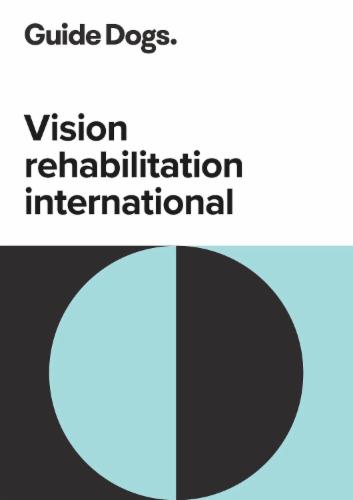Yielding Behaviors of Right-Turn-on-Red Drivers to a White Cane User
The hard learnt lessons – A personal reflection on O&M for adults with CVI (Editorial)
Using a Computer Application to Teach Body Awareness through Music and Movement to Students with Visual
Voices of Orientation and Mobility Instructors Who Are Visually Impaired: Results of a Focus Group
Orientation and Mobility (O&M) specialist education: Reflecting on the University of New South Wales (UNSW) Graduate Diploma in O&M
Vision Re/habilitation International is a journal intended to provide a forum for scholarly exchange among people dedicated to and involved any work relating to vision habilitation and rehabilitation of people who are blind or vision impaired. Articles considered for publication include:
- original research, with practical relevance to the O&M of people who are blind or vision impaired,
- critical reviews of substantive areas,
- theoretical position papers,
- descriptions, reviews, or evaluations of innovative instructional approaches,
- conceptual papers, comprehensive reviews, case studies, and policy analyses.
The editors also aim at providing a forum for discourse, debate, and critical analyses on any aspect of O&M, for example, existing philosophies, policy, or practice.
Open Access Policy
This journal provides immediate open access to its content under the Creative Commons CC BY-NC-ND 4.0 license on the principle that making research freely available to the public supports a greater global exchange of knowledge. Under the CC BY-NC-ND 4.0 license users are free to share the work (copy and redistribute the material in any medium or format), if the contribution is properly attributed and used for non-commercial purposes. The material published in the journal may not be altered or build upon.
ABOUT SOCIETY
Vision Re/habilitation International is supported by Guide Dogs NSW/ACT.
Guide Dogs NSW/ACT is the leading provider of Guide Dogs and orientation and mobility services that enable people with vision impairment to travel safely and independently. Each year university trained Orientation and Mobility specialists work with around 4,000 people of all ages to help them achieve their mobility goals.
Guide Dogs NSW/ACT is a Registered Provider under the National Disability Insurance Scheme (NDIS).
Archiving
Sciendo archives the contents of this journal in Portico - digital long-term preservation service of scholarly books, journals and collections.
Plagiarism Policy
The editorial board is participating in a growing community of Similarity Check System's users in order to ensure that the content published is original and trustworthy. Similarity Check is a medium that allows for comprehensive manuscripts screening, aimed to eliminate plagiarism and provide a high standard and quality peer-review process.
